One of the oldest inhabited cities in Israel, the old walled city of Acre sits on the Northern End of Haifa Bay. Like many other cities in the Holy Land, it has been occupied by many different cultures throughout the centuries. Before it’s heyday during the Crusader and Ottoman periods, it had been occupied by the Persians, Greeks and Romans, just to name a few. Many of those cultures are still visible in Acre’s old walled city, a UNESCO World Heritage Site.

Excavated Room from the Crusader Era
The city’s most striking building is the Citadel, an Ottoman structure built on the foundations of the old Crusader Fortress. The city was taken in the first crusade and held for a little less than 100 years. The Knights Templar were busy during this time, building their formidable fortress as well as an elaborate series of subterranean tunnels underneath the city which were to be used in the defense of the city. Today, many of these halls have been excavated, lending an impressive perspective to the building of this complicated structure. An audio guide is available at the visitor’s center which I found very useful in helping me understand how the Citadel was used and defended during the Crusades.
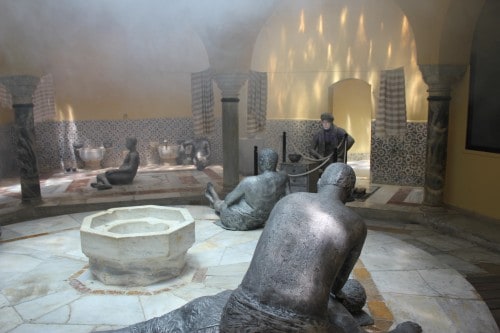
The Turkish Baths
Near the Citadel is the reconstructed Turkish Bath, restored to what it looked like when it was built in the late 18th Century. These baths were common throughout most of the Ottoman Empire.
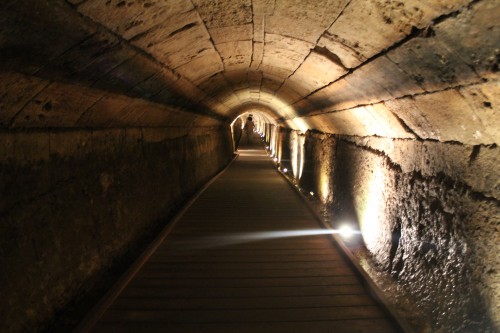
The Tunnel of the Knights Templar
Much of the Fortress built by the Knights Templar is now submerged, but thanks to some good excavating and an engineering feat, much of the tunnel they built under the city is now accessible to tourists. This area had been underwater for hundreds of years, but in the mid-1990s a series of pumps was installed and boardwalks were put in place, allowing for a unique glimpse into the defenses that made Acre such a hard city to capture. The tunnels are an easy walk, although the low ceilings in many places might make for some uncomfortable walking while crouched over for those visitor’s over six feet tall.
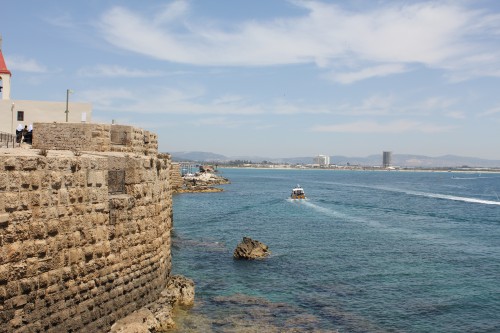
The Walls of Acre
The underground tunnels were only one of the factors that made Acre a difficult city to capture. Being a walled city surrounded by water on three sides also made it hard for invaders to properly attack the city. Nowhere in Acre is that more apparent than the walls on the Mediterranean side of the city. Much of the defense wall remains in place today, and a stroll around those ramparts is truly eye-opening. There are also sweeping views over the Mediterranean Sea and across the Bay of Haifa.

Fresh Bread in the Acre Souq
As historically significant as Acre is, my favorite part of the city was its bustling souq or market. The souq is such a colorful place, with an almost unimaginable abundance of goods for sale. I especially enjoyed seeing the fresh seafood displays, something unique to the markets in the coastal cities.
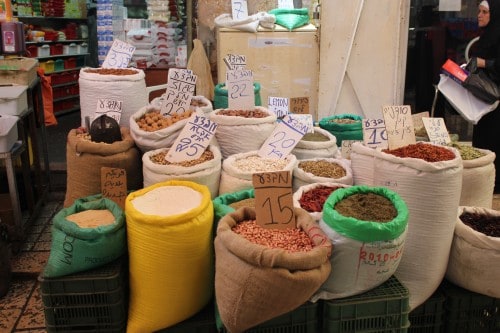
Spices for sale in the souq
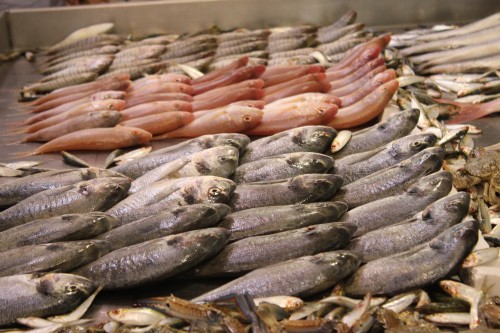
The Morning’s Catch fresh from the Mediterranean
Acre is an easy day-trip from Haifa, less than an hour away from Haifa across the bay. Acre also has one of the largest Arab populations (nearly 28%) of any Israeli city outside the West Bank. This gives the city a feel to it that is especially unique amongst Israel’s coastal cities. That adds a cultural reason to the historical ones for including Acre on any itinerary in Israel.

 4 Day Road Trip in Israel – Biblical Sites, Ruins, Castles & Humus
4 Day Road Trip in Israel – Biblical Sites, Ruins, Castles & Humus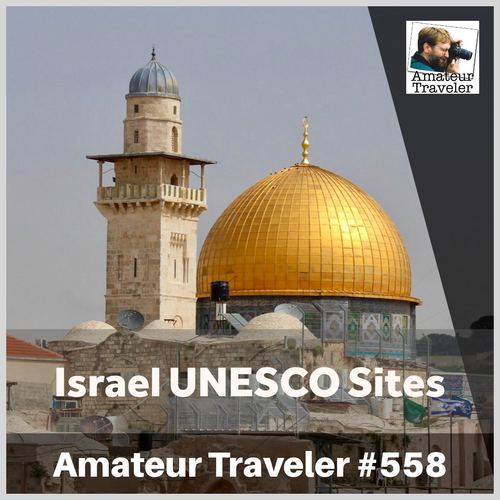 UNESCO World Heritage Sites of Israel and Palestine – Episode 558
UNESCO World Heritage Sites of Israel and Palestine – Episode 558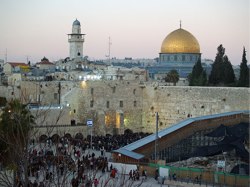 Travel to Israel – Episode 167
Travel to Israel – Episode 167 Travel to Tel Aviv, Israel – Episode 459
Travel to Tel Aviv, Israel – Episode 459
